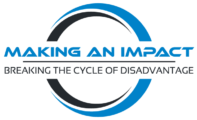Author: Michael A. Robinson, BS, R. Ph
Board Member At Large, Making An Impact
Up to about 30 percent of prescriptions written by a licensed healthcare provider are never filled. A portion of these prescriptions that are actually written never even make it to the pharmacy. The other portion received by the pharmacy, whether written, electronically transcribed, or faxed are never picked up. These prescriptions fall into either one of two categories. One category is patient noncompliance and not being an active participant in their own positive healthcare outcomes. The other category is patients who just cannot afford the copays, discount card prices, or even insurance, for that matter, if they are even eligible.
Both of these categories have the same impact on the healthcare system. The bottom line is whether you are just negligent or cannot afford your prescription, more stress will be put on the healthcare system. The condition that needs to be treated may or will get worse, leading to the need for additional medical attention. This can include a return visit to the doctor’s office, the emergency room, an urgent care facility, and the issuing of another prescription. Government and insurance reimbursements for healthcare services can be decreased if a patient is readmitted to the hospital for the same condition within a certain time frame. Reimbursement for prescriptions may be reduced if medications in certain common categories are filled at less than a certain percentage. This can lead to a loss of revenue for the pharmacy, along with wasted time and manpower from all healthcare entities involved in the process of getting to the point of having a prescription filled and never picked up.
Every step in the treatment process requires time, resources, talent, and financial considerations. All of these are wasted when prescriptions are not filled. Prescriptions are an integral part of the healthcare system. I can confidently say that most medical conditions can be managed very well on an outpatient basis. There are systems and resources in place to help patients become more compliant, but there are not many systems and/or resources available (if there are any readily available) for patients who cannot afford their copay, discount card price, or insurance of any type.
Avenues to decrease or completely eliminate payment at the pharmacy’s point of contact are desperately needed. As far as I know, this is the only point of contact in the healthcare system where you must pay in full at the time of service. This point of contact is the last stop on the road to treatment and positive healthcare outcomes. It must be addressed, and resources must be made available. This would be a very small step in the healthcare system that could lead to less stress on the system and lower costs in the long term, leading to better healthcare outcomes.




